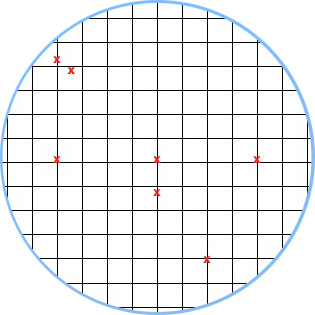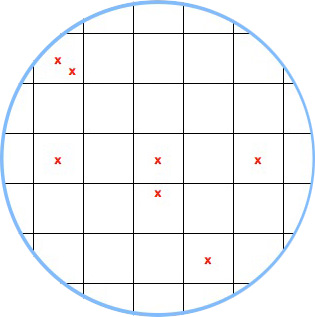The RV870 Story: AMD Showing up to the Fight
by Anand Lal Shimpi on February 14, 2010 12:00 AM EST- Posted in
- GPUs
Process vs. Architecture: The Difference Between ATI and NVIDIA
Ever since NV30 (GeForce FX), NVIDIA hasn’t been first to transition to any new manufacturing process. Instead of dedicating engineers to process technology, NVIDIA chooses to put more of its resources into architecture design. The flipside is true at ATI. ATI is much less afraid of new process nodes and thus devotes more engineering resources to manufacturing. Neither approach is the right one, they both have their tradeoffs.
NVIDIA’s approach means that on a mature process, it can execute frustratingly well. It also means that between major process boundaries (e.g. 55nm to 40nm), NVIDIA won’t be as competitive so it needs to spend more time to make its architecture more competitive. And you can do a lot with just architecture alone. Most of the effort put into RV770 was architecture and look at what it gave ATI compared to the RV670.
NVIDIA has historically believed it should let ATI take all of the risk jumping to a new process. Once the process is mature, NVIDIA would switch over. That’s great for NVIDIA, but it does mean that when it comes to jumping to a brand new process - ATI has more experience. Because ATI puts itself in this situation of having to jump to an unproven process earlier than its competitor, ATI has to dedicate more engineers to process technology in order to mitigate the risk.
In talking to me Carrell was quick to point out that moving between manufacturing processes is not a transition. A transition implies a smooth gradient from one technology to another. But moving between any major transistor nodes (e.g. 55nm to 45nm, not 90nm to 80nm) it’s less of a transition and more of a jump. You try to prepare for the jump, you try your best to land exactly where you want to, but once your feet leave the ground there’s very little to control where you end up.
Any process node jump involves a great deal of risk. The trick as a semiconductor manufacturer is how you minimize that risk.
At some point, both manufacturers have to build chips on a new process node otherwise they run the risk of becoming obsolete. If you’re more than one process generation behind, it’s game over for you. The question is, what type of chip do you build on a brand new process?
There are two schools of thought here: big jump or little jump. The size refers to the size of the chip you’re using in the jump.
Proponents of the little jump believe the following. In a new process, the defect density (number of defects per unit area on the wafer) isn’t very good. You’ll have a high number defects spread out all over the wafer. In order to minimize the impact of high defect density, you should use a little die.
If we have a wafer that has 100 defects across the surface of the wafer and can fit 1000 die on the wafer, the chance that any one die will be hit with a defect is only 10%.

A hypothetical wafer with 7 defects and a small die. Individual die are less likely to be impacted by defects.
The big jump is naturally the opposite. You use a big die on the new process. Now instead of 1000 die sharing 100 defects, you might only have 200 die sharing 100 defects. If there’s an even distribution of defects (which isn’t how it works), the chance of a die being hit with a defect is now 50%.

A hypothetical wafer with 7 defects and a large die.
Based on yields alone, there’s no reason you’d ever want to do a big jump. But there is good to be had from the big jump approach.
The obvious reason to do a big jump is if the things you’re going to be able to do by making huge chips (e.g. outperform the competition) will net you more revenue than if you had more of a smaller chip.
The not so obvious, but even more important reason to do a big jump is actually the reason most don’t like the big jump philosophy. Larger die are more likely to expose process problems because they will fail more often. With more opportunity to fail, you get more opportunity to see shortcomings in the process early on.
This is risky to your product, but it gives you a lot of learning that you can then use for future products based on the same process.










132 Comments
View All Comments
n7 - Sunday, February 14, 2010 - link
Another great story told.Thanx, Anand.
MrK6 - Sunday, February 14, 2010 - link
What a great piece. Thank you for taking the time to put this together; it's one of the best tech articles I've read.archcommus - Sunday, February 14, 2010 - link
Haven't even read the whole thing yet but I can already say this is excellent. Thank you, Anand.indicator - Sunday, February 14, 2010 - link
Hi allI felt I had to register here after reading this article , what a fantastic insight into everything that goes into making these GPU's and the dedication and talent it takes to be so creative.
Great to see Anands enthusiasm for the industry come across in the article too
I've been coming here and reading Anandtech since around the mid ninties I guess , it is a superb source of information , I look forward to every new article/review posted.
Keep it up guys
Lee
(uk)
d3x7r0 - Sunday, February 14, 2010 - link
Very very good article as usual in this website. AnandTech has been one of my favourite sites in the area for so long I don't even remember how I found out about the website, I actually believe I was still in 56k when I first came here.Anyway reading this article made me speculate on something (and please correct me if I'm wrong): If I got the timings right AMD-ATI should be working on the Northern Islands since the Radeon HD4xxx series days so the same issues they had with the HD5xxx series would be in the past. If this is true it means they know the HD4xxx were a success from the beginning of the process (or near it) and as such I can't but help it be even more excited to see what the next generation of ATI cards has in store.
It's such a good time to be an ATI fan it's not even funny :D
Atlantis6000bc - Sunday, February 14, 2010 - link
Those kind of article are the prime reason why I keep coming back to Anand....keep 'em comingThe13thWizard - Sunday, February 14, 2010 - link
Thanks Anand! Thats the best IT article Ive ever read! Very toughtfull and interesting!arnavvdesai - Sunday, February 14, 2010 - link
Really helps understand the industry a lot more. I really wish AMD would take a cue from its graphics division and really start hammering out what kind of chips do they want to build. However, they have their own set of challenges as Intel unlike NVIDIA is really really good on the foundry side as well.However, with gaming becoming more and more centered on consoles, does ATi have something cooking for the next generation of consoles? Would love Anand to ask them something about that. Do they believe that they will continue to sell enough cards to continue recouping their costs of designing and manufacturing them.
Vishnu Narayanan S - Sunday, February 14, 2010 - link
First of all, hats off to you for this amazing article.... Its these articles that bind us to the Anandtech website for years and years.I sincerely hope and request you to provide similar in-depth and "behind the scenes" stories from NVIDIA and Intel. Just to satisfy the FANbois... lol
fausto412 - Sunday, February 14, 2010 - link
once i started reading i couldn't stop. for a geek like me this was almost like sex:) keep them coming!